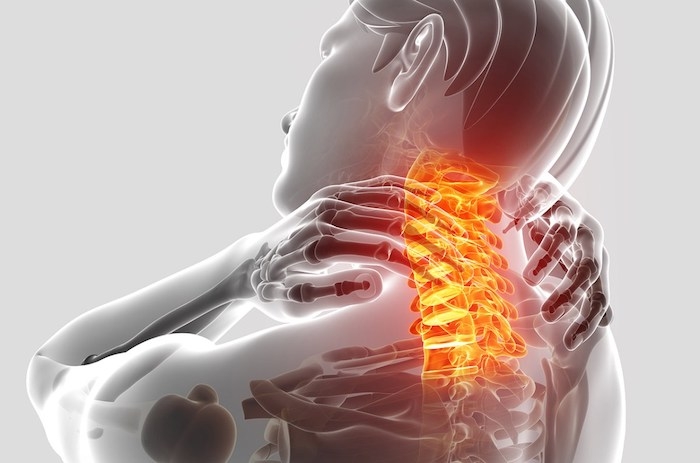Neck Hernia
 The vertebrae that make up the spine are connected to each other by two joints.
The vertebrae that make up the spine are connected to each other by two joints.
One of them is the discs and the other is the facet joint. There is a gel-like fluid in the middle of the discs and the outer part consists of a hard connective tissue. By acting as a cushion, the discs prevent damage to the spinal cord by minimizing the impacts that may occur or may occur while moving, while providing mobility to the spine.
Neck hernia occurs as a result of damage (hernia) in one or more of the 7 vertebrae in the cervical region, which is the top part of the spine consisting of three parts (cervical, thoracic, lumbar).
As a result of aging or trauma, fluid loss can be seen in the gel-like structure in the center of the disc. This fluid loss can also cause loss of function in the discs. Likewise, disc herniation, in other words hernia, may occur as a result of deterioration in the outer tissue of the disc or the overflow of the gel structure inside the disc towards the canal where the spinal cord is located.
What are Neck Hernia Treatment Methods?
Neck hernias can usually heal without the need for surgical intervention. In the treatment of neck hernia, anti-inflammatory analgesic drugs that reduce edema, exercise and epidural steroid injection are recommended. The aim here is to reduce the pressure of the material in the inner structure of the disc on the nerves and to alleviate the pain. This will increase the patient's quality of life.
In the treatment of hernia, the patient is recommended to rest in the first place. It can be said that resting for a day or two and avoiding exercise during this period helps to relieve the pain in the area, this also speeds up the recovery process of the patient. In some cases, bed rest is also recommended. However, since it would be inconvenient for the area to remain inactive for a long time, the rest should not last more than a day or two.
Medication
Apart from the methods listed above, if there is a pain that complicates the daily life of the person, this situation can be alleviated with painkillers. However, painkillers should not be used for a long time without consulting a doctor, and it should be noted that painkillers do not have therapeutic properties at this point. When symptoms such as persistent neck pain, restriction in movements and tingling in the hands and arms are observed, a doctor should be consulted and the necessary treatment process should be initiated.
Medicines used in the treatment of neck hernia also include the group of painkillers called analgesics. Doctors may state that muscle relaxants should also be used in some cases. If there is intense and unrelenting pain, the patient may also be given more effective medicine to use for a short time. It should not be forgotten that long-term use of such medicine has side effects such as insomnia, stomach bleeding, kidney problems. In addition, the patient may need to have an allergy test before starting such drugs.
Surgical Methods
Surgical intervention may be necessary for patients with persistent pain, loss of strength and spinal cord compression. This surgical intervention is called discectomy. This method is a method in which the removal of the part of the disc pressing on the spinal cord and nerve is used. Surgery is performed by making a small incision in the front of the neck or on the back of the neck. Where the surgery will be performed depends on the location of the hernia, the content of the surgery and the preference of the doctor.
Like all surgical interventions, this intervention has risks of various complications. These risks include post-operative bleeding, spinal cord damage, nerve damage or infection. Conditions such as hoarseness and difficulty in swallowing can also be seen in operations performed from the front, that is, the neck region. Hernia may recur in some of the patients due to the general health status, family history and post-operative life preferences of the patients. Recurrent hernias can be seen between the same or different vertebrae.
After the surgery, patients can be discharged within 24 hours and return to their daily activities gradually.
Other treatment methods
Physical therapy is a part of neck hernia treatment. Physical therapy is a type of treatment that includes many different applications. Within the scope of this treatment, methods such as stretching exercises, cardio exercises performed in a fixed position such as an exercise bike, massage, ultrasound and electrical muscle stimulation are used.
However, in cases where the patient's symptoms do not show any relief or reduction, other treatment options may be considered. Chief among these are steroid injections around the hernia to relieve pain and edema.
 The vertebrae that make up the spine are connected to each other by two joints.
The vertebrae that make up the spine are connected to each other by two joints.